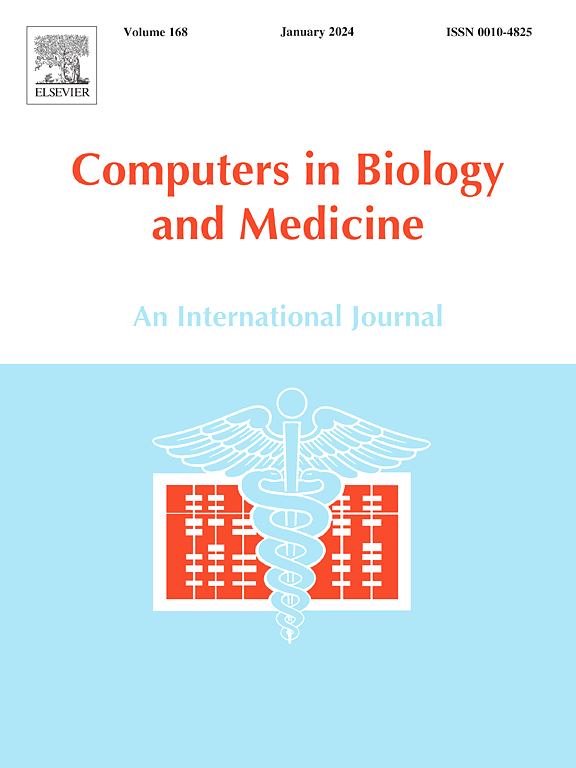A POD-NN methodology to determine in vivo mechanical properties of soft tissues. Application to human cornea deformed by Corvis ST test
IF 6.3
2区 医学
Q1 BIOLOGY
引用次数: 0
Abstract
The interaction between optical and biomechanical properties of the corneal tissue is crucial for the eye’s ability to refract and focus light. The mechanical properties vary among individuals and can change over time due to factors such as eye growth, ageing, and diseases like keratoconus. Estimating these properties is crucial for diagnosing ocular conditions, improving surgical outcomes, and enhancing vision quality, especially given increasing life expectancies and societal demands. Current ex-vivo methods for evaluating corneal mechanical properties are limited and not patient-specific. This study aims to develop a model to estimate in real-time the mechanical properties of the corneal tissue in-vivo. It is composed both by a proof of concept and by a clinical application. Regarding the proof of concept, we used high-fidelity Fluid-Structure Interaction (FSI) simulations of Non-Contact Tonometry (NCT) with Corvis ST® (OCULUS, Wetzlar, Germany) device to create a large dataset of corneal deformation evolution. Proper Orthogonal Decomposition (POD) was applied to this dataset to identify principal modes of variation, resulting in a reduced-order model (ROM). We then trained a Neural Network (NN) using the reduced coefficients, intraocular pressure (IOP), and corneal geometry derived from Pentacam® (OCULUS, Wetzlar, Germany) elevation data to predict the mechanical properties of the corneal tissue. This methodology was then applied to a clinical case in which the mechanical properties of the corneal tissue are estimated based on Corvis ST results. Our method demonstrated the potential for real-time, in-vivo estimation of corneal biomechanics, offering a significant advancement over traditional approaches that require time-consuming numerical simulations. This model, being entirely data-driven, eliminates the need for complex inverse analyses, providing an efficient and accurate tool to be implemented directly in the Corvis ST device.

用POD-NN方法确定软组织的体内力学特性。Corvis ST试验在人角膜变形中的应用
角膜组织的光学和生物力学特性之间的相互作用对眼睛的折射和聚焦光的能力至关重要。每个人的机械性能各不相同,并且由于眼睛生长、衰老和圆锥角膜等疾病等因素,会随着时间的推移而改变。评估这些特性对于诊断眼部疾病、改善手术结果和提高视力质量至关重要,特别是考虑到预期寿命和社会需求的增加。目前评估角膜力学特性的离体方法是有限的,而且不是针对患者的。本研究旨在建立一个模型来实时估计角膜组织在体内的力学特性。它由概念验证和临床应用两部分组成。关于概念验证,我们使用Corvis ST®(OCULUS, Wetzlar,德国)设备的高保真流固耦合(FSI)模拟非接触式眼压测量(NCT)来创建角膜变形演变的大型数据集。对该数据集进行适当的正交分解(POD)来识别主要的变化模式,从而得到降阶模型(ROM)。然后,我们使用Pentacam®(OCULUS, Wetzlar, Germany)仰角数据得出的简化系数、眼内压(IOP)和角膜几何形状来训练神经网络(NN),以预测角膜组织的力学特性。然后将该方法应用于临床病例,其中基于Corvis ST结果估计角膜组织的力学特性。我们的方法证明了实时、活体估计角膜生物力学的潜力,与需要耗时的数值模拟的传统方法相比,提供了显著的进步。该模型完全由数据驱动,无需进行复杂的反向分析,为直接在Corvis ST设备中实施提供了高效、准确的工具。
本文章由计算机程序翻译,如有差异,请以英文原文为准。
求助全文
约1分钟内获得全文
求助全文
来源期刊

Computers in biology and medicine
工程技术-工程:生物医学
CiteScore
11.70
自引率
10.40%
发文量
1086
审稿时长
74 days
期刊介绍:
Computers in Biology and Medicine is an international forum for sharing groundbreaking advancements in the use of computers in bioscience and medicine. This journal serves as a medium for communicating essential research, instruction, ideas, and information regarding the rapidly evolving field of computer applications in these domains. By encouraging the exchange of knowledge, we aim to facilitate progress and innovation in the utilization of computers in biology and medicine.
 求助内容:
求助内容: 应助结果提醒方式:
应助结果提醒方式:


